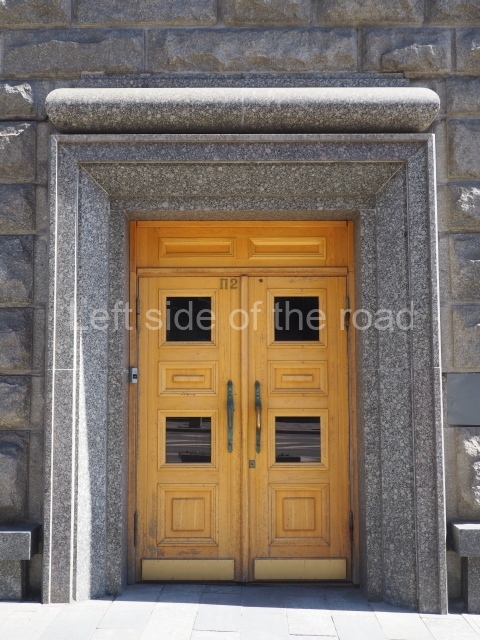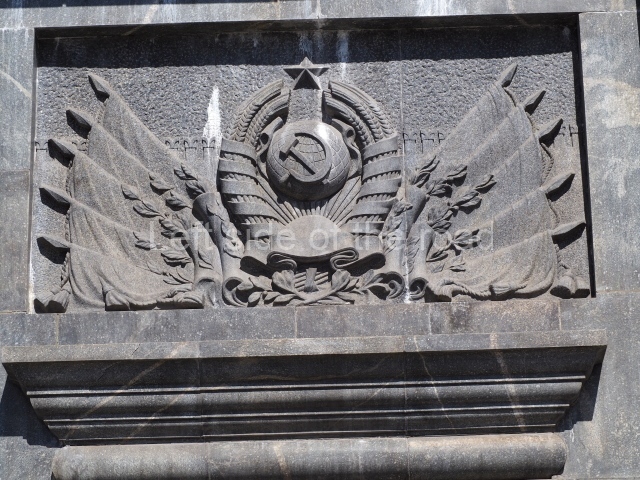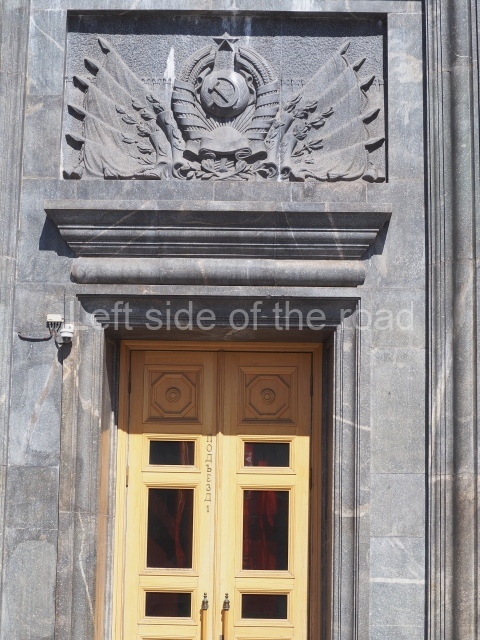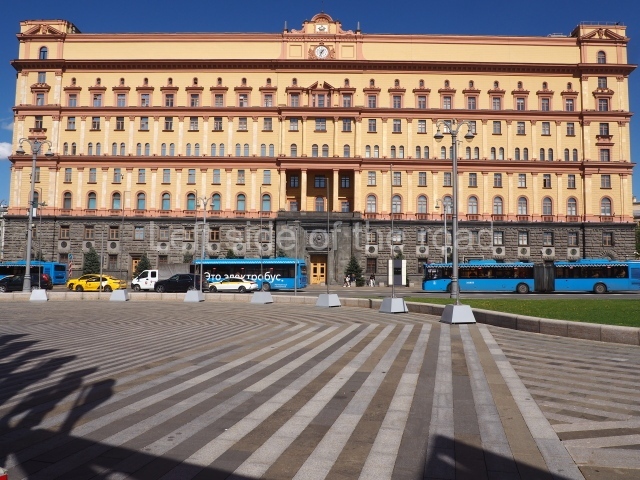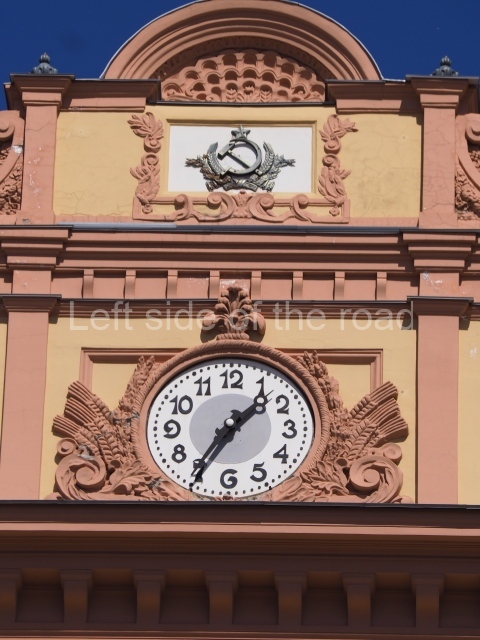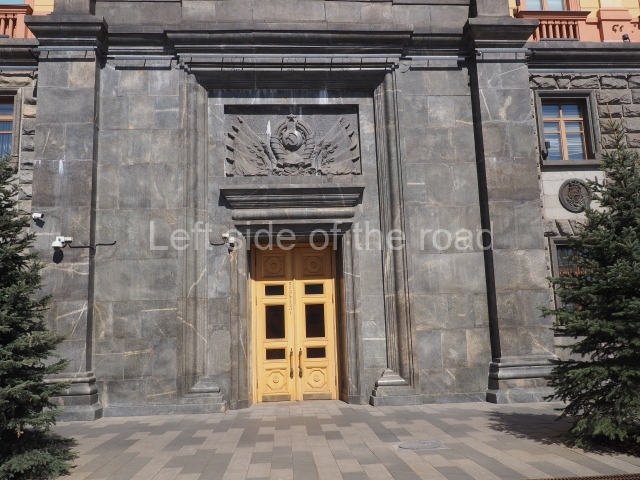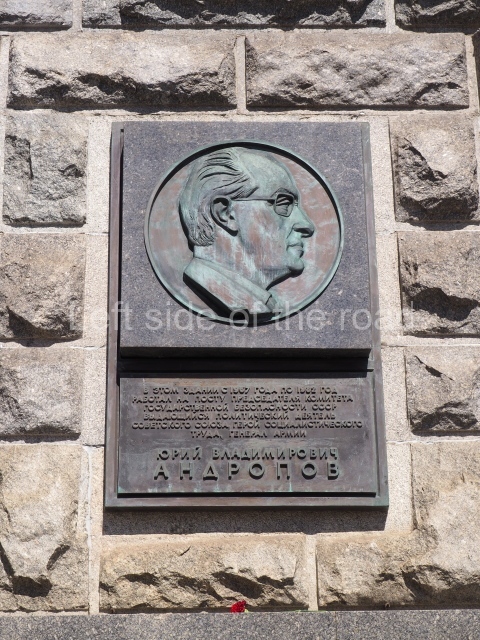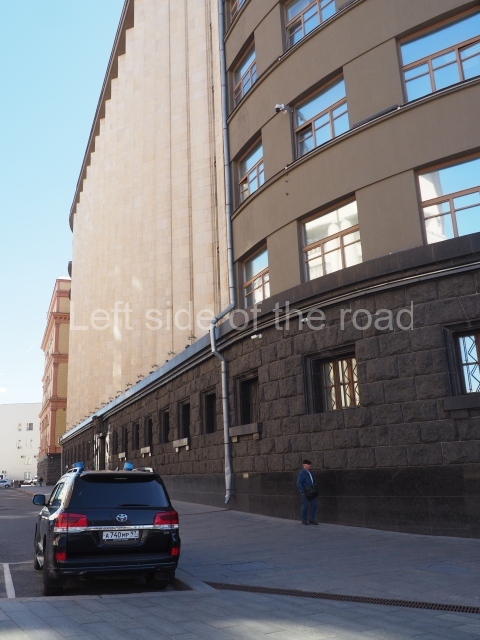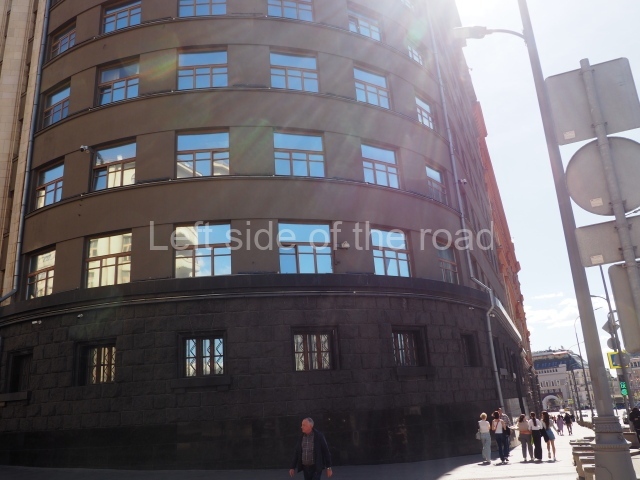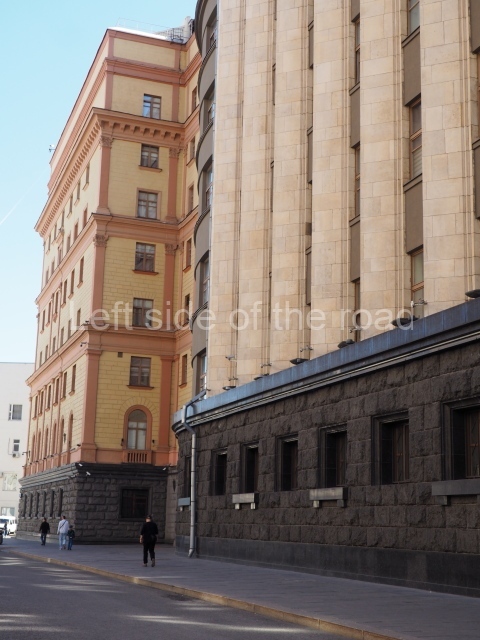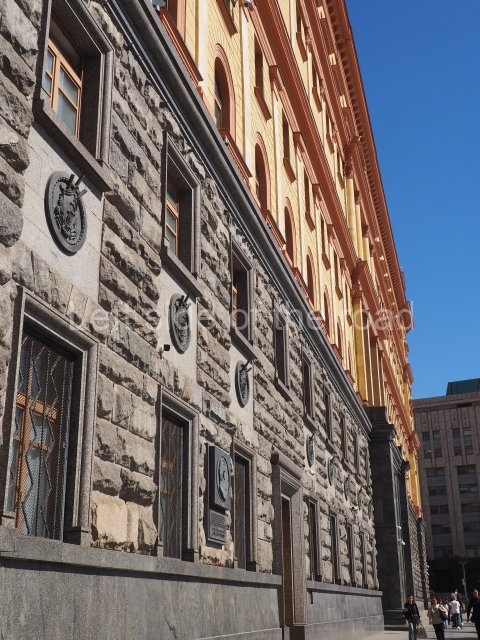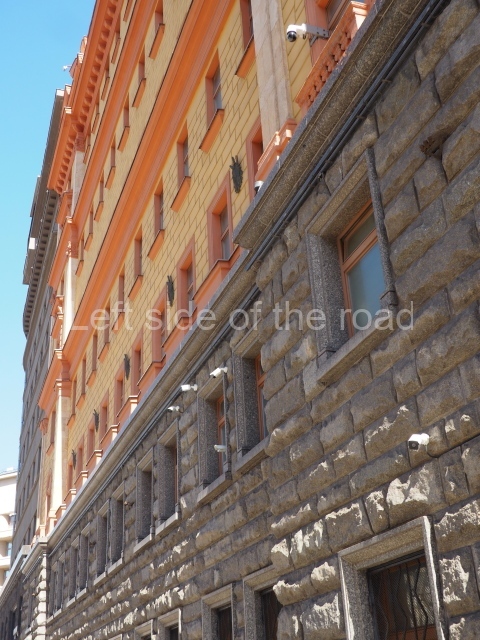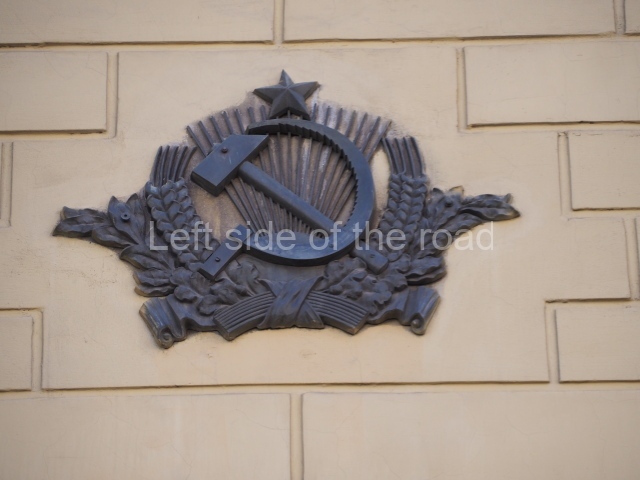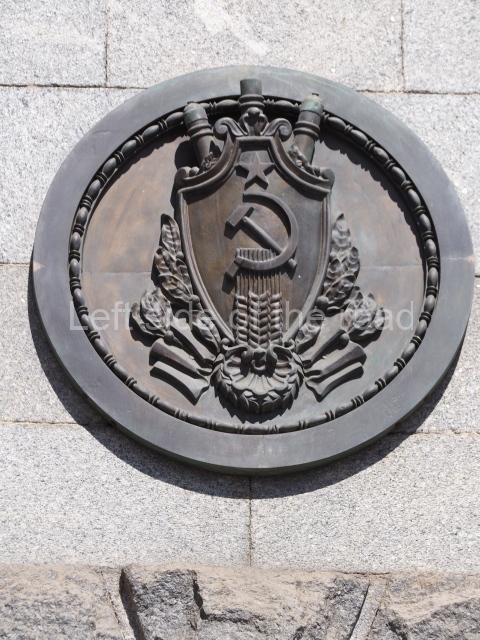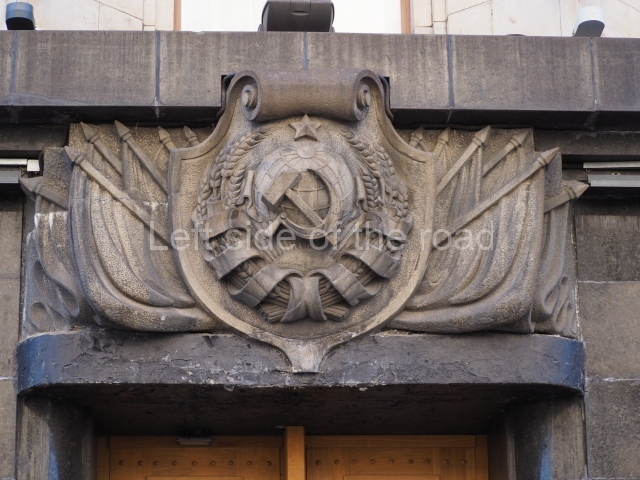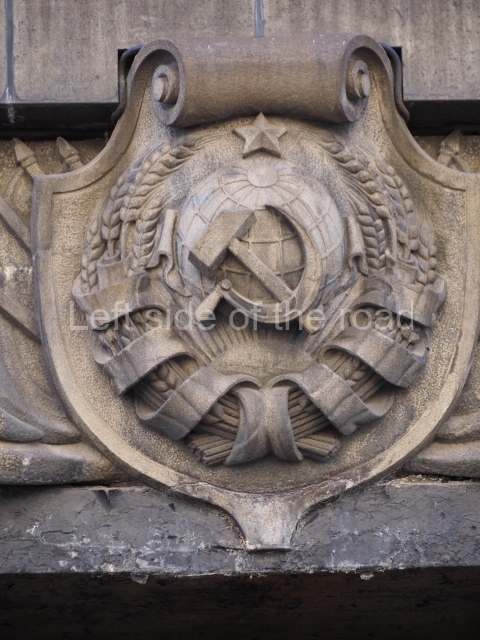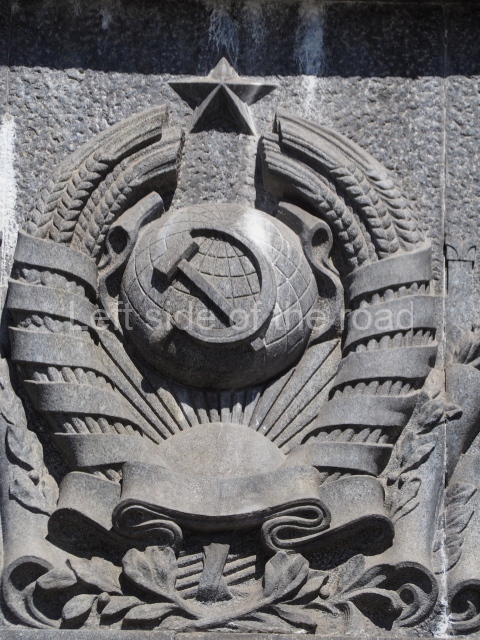Lubyanka Building
Lubyanka (Russian: Лубянка, ) is the popular name for the building which contains the headquarters of the Border Guard Service, (an agency of the FSB) and its affiliated prison, on Lubyanka Square in the Meshchansky District of Moscow, Russia. It is a large Neo-Baroque building with a façade of yellow brick designed by Alexander V. Ivanov in 1897 and augmented by Aleksey Shchusev from 1940 to 1947. It was previously the national headquarters of the KGB.
The Lubyanka was originally built in 1898 as the headquarters of the All-Russia Insurance Company (Rossiya Insurance Company). It is noted for its parquet floors and pale green walls. Belying its massiveness, the edifice avoids an impression of heroic scale: isolated Palladian and Baroque details, such as the minute pediments over the corner bays and the central loggia, are lost in an endlessly repeating palace façade where three bands of cornices emphasize the horizontal lines. A clock is centred in the uppermost band of the façade.
A fountain used to stand in front of the building, at the centre of Lubyanka Square. Following the Bolshevik Revolution the structure was taken over by the government in 1918 for use as the headquarters of the the Cheka. The prison is on the top floor, but since there are no windows on that floor, most prisoners, and therefore popular conception, thought they were being detained in its basement.
In 1940, Aleksey Shchusev was commissioned to enlarge the building. By 1947, his new design had doubled Lubyanka’s size horizontally, with the original structure taking up the left half of the façade (as viewed from the street). He added another storey and extended the structure by incorporating backstreet buildings. Shchusev’s design accentuated Neo-Renaissance detailing, but only the right part of the façade was constructed under his direction in the 1940s, due to the war and other hindrances.
In 1958, the fountain at the centre of Lubyanka Square was replaced by a statue of Felix Dzerzhinsky (‘Iron Felix’), founder of the Cheka. This statue now stands, on its original plinth, in the Muzeon Art Park (Park of the Fallen).
The building’s asymmetric façade survived intact until 1983, when the original structure was reconstructed to match the new build, at the urging of Communist Party General Secretary and former KGB Director Yuri Andropov, in accordance with Shchusev’s plans.
Although the Soviet secret police changed its name many times, their headquarters remained in this building. Secret police chiefs from Lavrenty Beria to Andropov used the same office on the third floor, which looked down on the statue of Cheka founder Felix Dzerzhinsky.
After the dissolution of the KGB in 1991, the Lubyanka became the headquarters of the Border Guard Service of Russia, as well as the Lubyanka prison, and is one directorate of the Federal Security Service of the Russian Federation (FSB). A museum of the KGB (now called Историко-демонстрационный зал ФСБ России, Historical Demonstration hall of the Russian FSB) was opened to the public (but you have to get special permission to enter).
Text from Wikipedia.
Location;
2 Bolshaya Lubyanka Street.
GPS;
55.759204° N
37.62874° E






